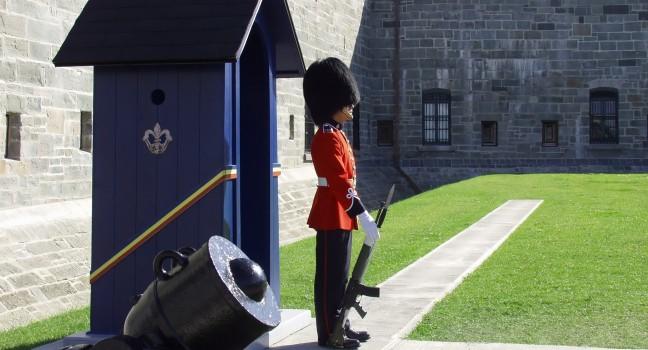La Citadelle

Built at the city's highest point, on Cap Diamant, the Citadelle is the largest fortified base in North America still occupied by troops. The 25-building fortress is, quite literally, the star of the Fortifications of Québec National Historic Site. It was intended to protect the port, prevent the enemy from taking up a position on the Plains of Abraham, and provide a refuge in case of an attack.
Since 1920, the Citadelle has served as a base for Canada's most storied French-speaking military formation, the Royal 22e Régiment, known across Canada as the Van Doos, from the French "vingt-deux" (22). Firearms, uniforms, and decorations from as far back as the 17th century are displayed in the Musée du Royal 22e Régiment in the former powder magazine, built in 1750. Watch the Changing of the Guard, a ceremony in which troops parade before the Citadelle in red coats and black fur hats while a band plays. The regiment's mascot, a well-behaved goat, watches along. The queen's representative in Canada, the governor-general, has a residence in the Citadelle, and it's open for tours in summer. You must take a tour to access the Citadelle, since it's a military base.
The location—set high above the St. Lawrence river with stunning views of the city and surrounding countryside—is worth a visit even if you don't want to pay (or wait) to take a tour.



